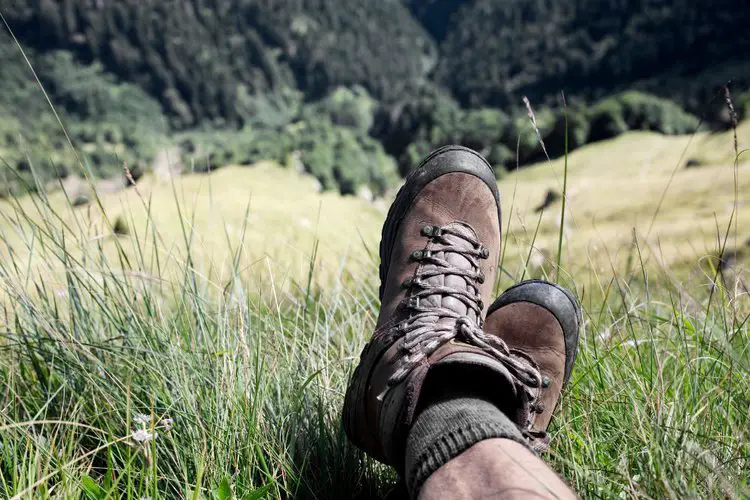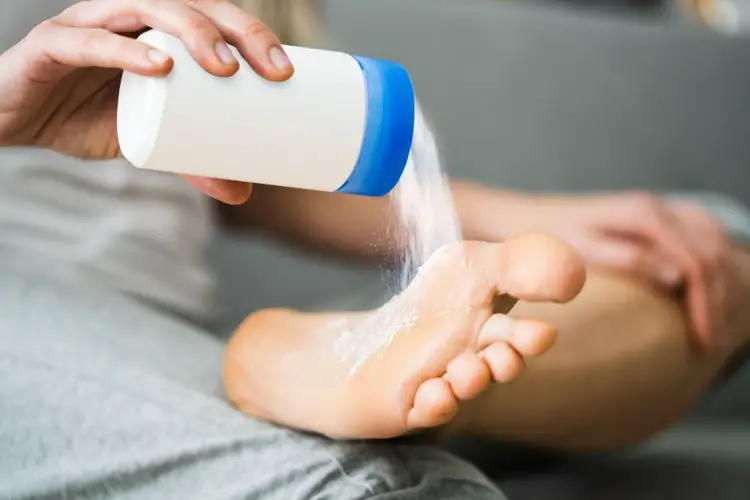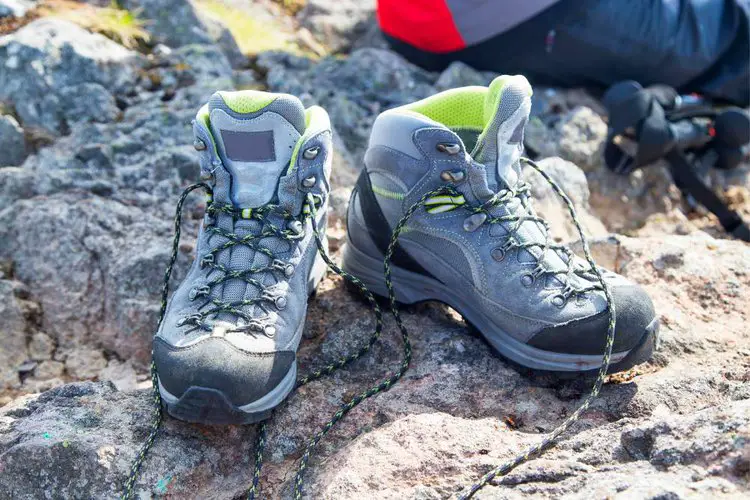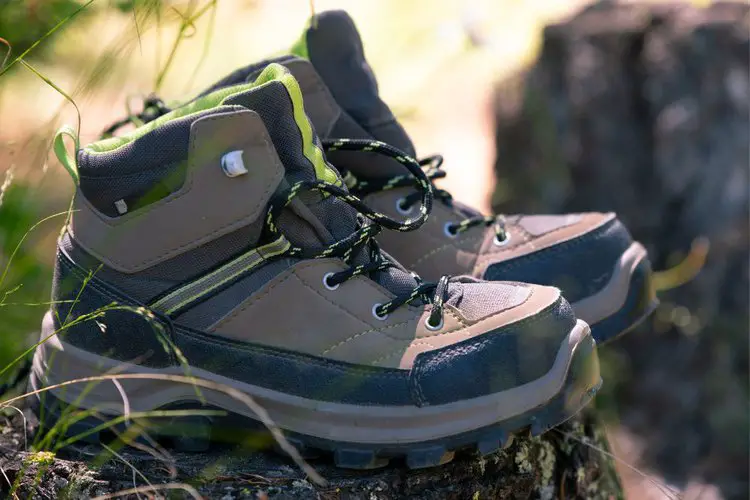Hiking is a great way to explore nature and get some exercise. However, it can be an uncomfortable experience if your feet are sweating in your hiking boots.
Not only does this cause discomfort, but it can also lead to blisters and other foot-related problems.
In this article, we’ll explore the reasons why feet sweat in hiking boots and provide you with tips to help you stop feet sweating in hiking boots.
Contents
Reasons Why Your Feet Sweat in Hiking Boots
Before we dive into the tips, it’s essential to understand why feet sweat in hiking boots. Here are some reasons why your feet might be sweating in your hiking boots:
- Overheating: When your feet get too hot, they naturally try to cool down by sweating. Hiking boots can trap heat, especially in warm weather conditions, leading to excessive sweating.
- Poor ventilation: Hiking boots are designed to protect your feet from the elements, but they can also limit airflow. Poor ventilation can cause your feet to sweat more.
- Wet conditions: If you’re hiking in wet conditions, your boots may become saturated, which can lead to excessive sweating. Wet feet can also lead to blisters and other foot problems.
- Physiological factors: Some people naturally sweat more than others, regardless of the environment or conditions.
Now that we’ve covered the reasons why feet sweat in hiking boots let’s explore some ways to stop feet sweating in hiking boots.
Tips to Stop Feet Sweating in Hiking Boots
Fortunately, there are several ways to reduce sweating and keep your feet cool and dry while hiking.
In this article, we’ll explore some tips and techniques for dealing with feet sweating in hiking boots, from choosing the right gear to practicing good foot hygiene.
By following these tips, you can enjoy a more comfortable and enjoyable hiking experience, with dry, happy feet.
1. Choose the Right Hiking Boots

Selecting the right hiking boots is essential for keeping your feet dry and comfortable.
Look for boots that are made with breathable materials and have a moisture-wicking lining.
- BREATHABLE: water resistant oiled nubuck leather upper with vented mesh panels for comfort;...
- TRACTION: KEEN ALL-TERRAIN rubber outsole provides high traction grip in muddy environments and on...
- SUPPORT: external support shank delivers balance on uneven surfaces; contoured heel provides next...
Last update on 2023-11-10 / Affiliate links / Images from Amazon Product Advertising API
It’s also essential to find hiking boots that fit correctly. Ill-fitting boots can cause blisters and other foot problems, which can lead to excessive sweating.
- Make sure you wear boots that fit properly and have a snug but comfortable fit. This will prevent your feet from sliding around inside the boot and causing friction, which can lead to blisters and excessive sweating.
- Consider using insoles or orthotics to help improve the fit of your boots and provide extra cushioning and support.
2. Wear the Right Socks

Wearing the right socks can make a big difference in keeping your feet dry.
- Look for socks and boots made of moisture-wicking materials such as wool, polyester, or nylon, as they help to pull moisture away from the skin and promote evaporation.
- Choose socks with a snug fit and no extra padding, as this can trap moisture and lead to discomfort and blisters.
- Avoid cotton socks and boots as they tend to absorb moisture and can lead to damp and uncomfortable feet.
- Arch support - Merrell short cushion low cut ankle socks have arch band support to give you maximum...
- Reinforced heel and toe - Merrell and hiking socks have reinforced heel and toe which ensures better...
- Get more out of your hike - Merrell socks are specially designed to make sure the most serious of...
Last update on 2023-11-10 / Affiliate links / Images from Amazon Product Advertising API
3. Use Antiperspirant
- The #1 doctor recommended clinical antiperspirant brand for excessive sweating and hyperhidrosis.
- Prescription strength antiperspirant ingredient that doesn't require a prescription.
- Fragrance-free roll-on deodorant with 12% Aluminum Chloride for up to 72 hours of protection against...
Last update on 2023-11-11 / Affiliate links / Images from Amazon Product Advertising API
Antiperspirant is designed to prevent sweating, and it can also be used on your feet.
Apply antiperspirant to the bottom of your feet and in between your toes before putting on your hiking boots. This will help reduce sweating and keep your feet dry.
4. Apply Foot Powder

Foot powder is designed to absorb moisture and reduce friction.
Apply foot powder to your feet before putting on your hiking boots to help keep your feet dry and comfortable.
- Maximum sweat absorption
- All-day odor protection guaranteed
- Keeps feet & shoes fresh and dry
Last update on 2023-11-11 / Affiliate links / Images from Amazon Product Advertising API
5. Take Frequent Breaks
Taking frequent breaks while hiking can help reduce the amount of sweat your feet produce.
Take your hiking boots off and allow your feet to breathe. If your boots become saturated, swap them out for a dry pair.

- When hiking in hot or humid conditions, it’s important to adjust your pace to avoid overexertion and excessive sweating. Take breaks in the shade, drink plenty of water, and slow down to avoid overheating.
- Similarly, when hiking in cold or wet conditions, it’s important to adjust your pace to avoid sweating and getting too cold. Layering your clothing and adjusting your pace can help regulate your body temperature and prevent excessive perspiration.
6. Dry Your Hiking Boots

If your hiking boots become wet or saturated, it’s essential to dry them out before wearing them again. Wet boots can lead to excessive sweating and blisters.
Stuff your boots with newspaper to absorb moisture and let them dry in a well-ventilated area are good choices. For more information, we have a very thorough drying guide here!
7. Use moisture-wicking insoles

Insoles made of moisture-wicking materials like wool or synthetic blends can help draw moisture away from your feet and promote ventilation.
- Look for insoles with perforations or air channels that allow for better air circulation and breathability.
- Some insoles come with antibacterial or antifungal properties, which can help prevent odors and fungal infections.
By using moisture-wicking insoles in your hiking boots, you can help reduce the amount of sweat that accumulates in your boots and keep your feet cooler and drier, making for a more comfortable hiking experience.
Conclusion
Sweaty feet can make hiking uncomfortable and lead to foot problems like blisters. The good news is, there are ways to stop feet sweating in hiking boots.
Choosing the right boots and socks, using antiperspirants, and taking frequent breaks are all effective ways to reduce sweating.
Additionally, using foot powder and drying your boots out can help keep your feet dry and comfortable.
By following these tips, you can enjoy hiking without the discomfort of sweaty feet.





